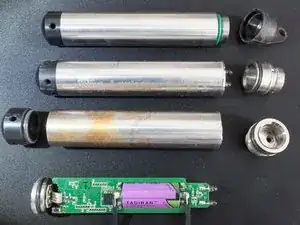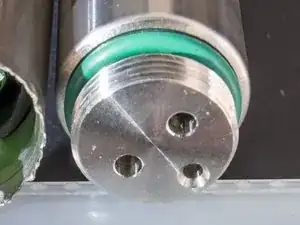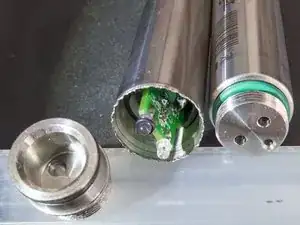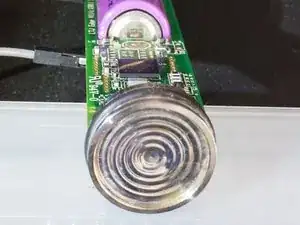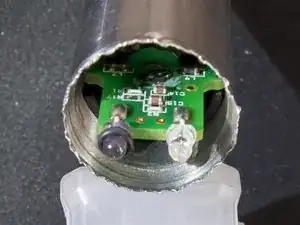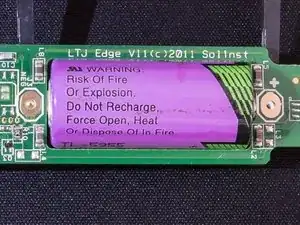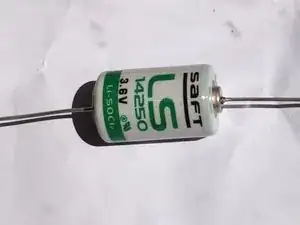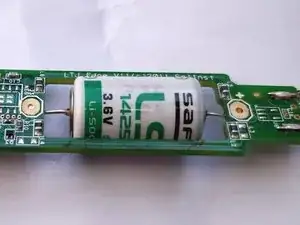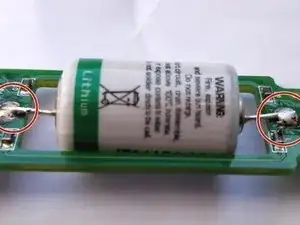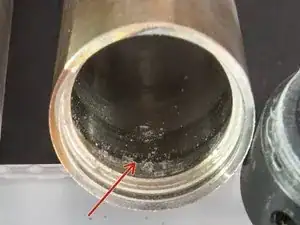Einleitung
According to Solinst their loggers are not meant to be opened. The logger's batteries are neither rechargeable nor designed to be replaced. Depending on the frequency of logging and number of years in use, these loggers will run out of battery and therefore have a finite lifespan despite their excellent reliability and built quality. Even when these loggers are just sitting in a closet their batteries tend to drain after about 10 years. With a little skill and elbow grease the loggers can actually be opened and a new battery can be soldered in.
I found that the indicated battery status in the Levellogger Software doesn't pick up an ageing battery very well. I have had some loggers that would record strange values and struggle to communicate with the PC via the docking station. Upon opening them up I found that the battery still holds the original 3.6V but as soon as the logger draws current the voltage drops to below 3V. I don't have an oscilloscope to record how far it actually dips but I'm pretty sure that is the reason for recording strange values and communication issues.
Opening up the loggers and replacing their battery is not particularly difficult. The only specialized skill required is some basic soldering.
Werkzeuge
Ersatzteile
-
-
Pry open the rounded edge that is part of the main steel tube (right behind the O-ring) until you can pull out the head (item on the bottom left of the image). The center item shows the pried open logger tube with the head removed.
-
Alternatively you can grind off the bend edge. The logger will still be water tight upon re-assembly as there are 1-2 O-rings on the inside and grinding away the edge will not interfere with the O-rings. However it won't be easy to secure the head in place without the metal edge.
-
-
-
Remove the plastic end cap that protects the pressure and temperature sensor. The sensor is not attached to the end cap and it might be necessary to use quite a bit of force to get it off. I had to use vice grips and a bench vice for some loggers. You can also stick a screw driver through the holes and pull it off that way.
-
-
-
Take the logger PCB and sensor out of the outer housing. Take a flat screw driver and push on the edge of the sensor on the solid outer steel ring (see picture). This is somewhat obstructed by a flange inside the outer tube casing but with a little care you can get between the flange and the sensor ring.
-
Simultaneously pull on the PCB by the IR diodes. Don't twist the PCB when pulling on it as this will just result in twisting the wires connecting the PCB and the sensor.
-
-
-
De-solder the old battery. You can just gently push on the whole battery while applying heat to the solder joints.
-
-
-
The loggers come with a 3.6V non-rechargeable Lithium battery. The size is a 2/3 AA battery. You can also purchase a 1/2 size AA battery with the same voltage (shown in images) which will in most cases have a lower capacity and lifespan. To avoid the need for spot welding I would recommend getting a battery with pre-fitted leads.
-
The original battery is from Tadiran, model SL-561 and has a rated temperature ranger of -55 to 130 °C. These batteries are pricey but worth it in the long run. I have a logger that has a battery that is over 12 years old and still works!
-
Solder the new battery to the large solder pads. Make sure you don't reverse the polarity.
-
-
-
Clean logger tube and all O-rings before reassembly.
-
Replace the desiccation pack.
-
When re-fitting the logger cap with the three holes (IR-diodes and orientation pin) make sure to orient the head in the right direction so that the darker IR diode meets the transparent IR diode of the reader device and vice versa.
-
When re-assembled crimp previously pried open edge slightly to secure logger metal cap in place.
-
Connect to the logger using the Solinst Levellogger Software. The power loss appears to wipe the internal clock and all data from the logger. If you need recover data from the logger I would recommend to supply just over 3 V to the logger while the old battery is still connected and then perform a data download.
-
I have not run any long tests on the loggers where I have replaced the battery. Initial impressions are promising but there is a chance that the loggers won't be 100% waterproof afterwards. However minding that the waterproofing is done with O-rings only I think it is totally feasible to get years of usage out of the loggers after replacing a dead battery. Would love to see other people's experiences in the comments.
